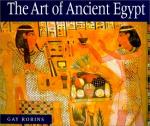|
This section contains 922 words (approx. 4 pages at 300 words per page) |

|
Etiology. In the ancient Egyptian language, mesi is the basic word for birth. It is a component in many names, often combined with a god's name, such as in Ramesses (Re is born) and Thutmose (Thoth is born), which contain different grammatical forms of the verb "to be born." Other phrases with a similar meaning were pery her ta (come down to the ground), pery em khet (come forth from the womb), and hay em khet (descend from the womb).
Conception. The Egyptians understood the basic cause of conception from earliest times. In the fifth century B.C.E. they thought that the father produced semen from his bones, but that it was then stored in the testicles. They understood that the penis was used to transfer semen to the womb. Mother's milk, however, was thought to be the source of the...
|
This section contains 922 words (approx. 4 pages at 300 words per page) |

|




